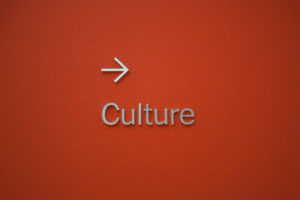
Photo by Scott Beale / Laughing Squid CC BY-NC-ND 2.0
[SB] Concussion remains the current hot topic in sports injury prevention. Injury Prevention has published many an article on the topic, including the recent An examination of concussion education programmes: a scoping review methodology. I have blogged about this here too.
I have invited Dr Johna Register-Mihalik (follow her on Twitter @johnamihalik), an assistant professor in the Department of Exercise and Sport Science at The University of North Carolina at Chapel Hill, to share her thoughts on concussion prevention with us. Dr Register-Mihalik serves as a research scientist at the Injury Prevention Research Centre at UNC-CH. She is on the Brain Injury Association of North Carolina Board and USA Baseball’s Medical and Safety Advisory Committee, and is also an active member of the National Athletic Trainers’ Association (NATA) and the American College of Sports Medicine (ACSM), amongst others.
[JRM] Few injuries receive the attention and the discussion that concussion does, especially those occurring in sports such as football, in both the mainstream and medical communities. Concussion is a complex injury that is the result of forces transmitted through the brain, resulting in a complex neurometabolic cascade leading to a wide array of signs and symptoms. The more we learn about concussion, as well as exposure to head impacts, the more we realize that we don’t know. It is an injury, that – perhaps because it is the brain that is affected – most in the sporting community are hyper aware of, regardless of level of participation.
However, due to this increasing attention and focus, one of the most common discussions and recommendations is to change the “culture” to improve safety concerning concussion and head trauma. However, when we say “change the culture”, what are we actually trying to change? Certainly, we can think of key things we want to see changed universally, such as: recognizing as many injuries as possible, student-athletes disclosing these injuries if they haven’t been identified (when possible), individuals and organizations consistently adhering to no same day return to play, no student-athlete returning to play without clearance from a medical professional with the training to make the decision, and perhaps more general, a sporting environment that encourages safe practices, not playing through injury, and creates a positive environment for players, coaches, fans, and families alike. I am sure we could continue to add to this list of things we want to change or see as a consistent part of sport. However, most factors or behaviors around the culture of sport are complex and multifaceted.
For one, many aspects of the culture of sport that are at their core good, may progress to risky decisions down the road. Let’s take the concept of persistence and not quitting. While at the core those are good things, these may be the constructs that then drive playing through injuries, especially those like concussions that we cannot always see. While no studies have directly addressed these relationships, data does highlight not wanting to let teammates or coaches down and not wanting to be pulled from play as primary reasons for not disclosing a concussion (McCrea, 2004, Register-Mihalik, 2013; Kerr, 2016). In addition, there is data to show that even some of the efforts that we direct to improve the culture, may have a negative effect (Kroshus et al, 2015) . This body of work highlights the importance of careful thoughtful messaging and imagery giving in our educational sessions, videos, and programs.
The type of change we talk about around concussion and head trauma is multifaceted. As such, the work to truly improve outcomes, improve behaviors, and create a “safe” environment (both social and physical) must also be multifaceted and affect multiple levels of the socio-ecological framework. It is also work that should be thoughtful, not sensationalized, and rooted in evidence – which can all be difficult things in the face of such heightened attention around a topic, where many have opinions. The work to truly insightful change will continue to require an interdiscplinary and community-based approach to not only develop the interventions and tools for change, but to see them be both successfully implemented and sustainable. I for one am excited about this work ahead and look forward to working with others to continue to see change happen for the better.